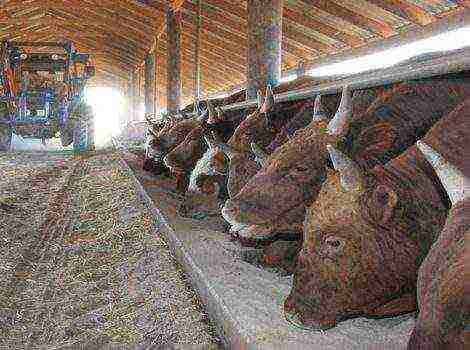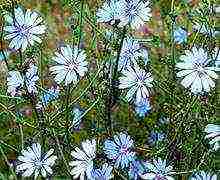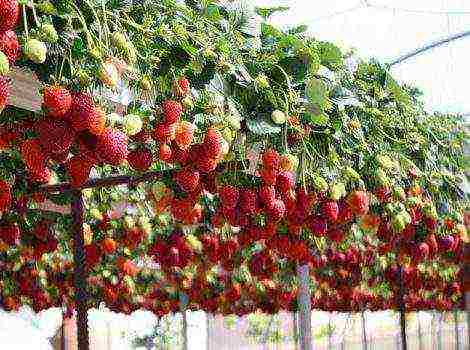Content
- 1 Types of industrial crops
- 2 Cultivation of industrial crops
- 3 Main industrial crops in Russia
- 4 Industrial crops in the world
- 5 Genetically modified crops and their capabilities
- 6 Gasoline from industrial crops
- 7 The importance of crop production for the country's economy
- 8 What crops are cultivated in Russia?
- 9 Melon and vegetable growing
- 10 The importance of crop production for agriculture
- 11 What factors influence the development of crop production?
- 12 Main industries
- 13 Cultivation of cereals
- 14 Cultivation of potatoes and tuber crops
- 15 Industrial crops
- 16 Vegetable growing and melon growing
- 17 Growing fruit crops and grapes
- 18 Fodder crops
- 19 Secondary areas of crop production
- 20 Conclusion
Some industries process raw materials from plants. Such plants are called industrial crops. These include spinning, sugar, oil, starch, rubber, essential oil, tanning, dyeing, medicinal and other plants.
-
Cotton plant: 1 - a twig with a flower, buds and a green box; 2 - seed; 3 - seed with combed fibers; 4 - mature capsule.
-
Our most important oilseed crop is sunflower.
-
Cotton harvesting (Uzbekistan).
The first place among spinning plants belongs to one of the oldest cultivated plants - cotton. It was grown in India and China for 3 thousand years BC. NS. In Mexico and Peru, the cotton culture arose independently also in ancient times. Our cotton is grown in Central Asia and Transcaucasia.
Cotton is cultivated for the fibers (hairs) that cover the seeds. The fibers are white, but there are plants in which these fibers are brown, greenish and creamy. The length of the fiber is from 25 to 38 mm, and in some plants it reaches 50-60 mm. The thickness (fineness) of the fiber is 15–20 µm. The longer and thinner the fiber, the higher its value. Our breeder scientists have created fine-staple cotton varieties with superior technological qualities, with white and colored fibers.
In Central Asia, cotton is sown in mid-April. Cotton blooms in July. In 45-60 days after flowering, the fruits (capsules) ripen and open. Collect the fiber together with the seeds, this is raw cotton. On special machines, the fiber is separated from the seeds. From 100 kg of raw cotton, 28-42 kg of pure fiber are obtained. Yarn is spun from cotton fiber, and various fabrics are woven from it (chintz, satin, cambric, knitwear, technical fabrics).
Among the spinning plants, a group of bast crops stands out. Their fibers are either in the stems (flax, hemp, jute, kenaf, etc.), or in the leaves (sisal, abaca, New Zealand flax).
Flax is also the oldest cultivated plant. Linen fabrics were found on the mummies of the Egyptian pharaohs. The ancient Slavs also made linen fabrics. For a long time, people have been selecting the best flax plants. Gradually, unbranched high fiber flax and undersized branching curl flax were bred. Fiber flax gives the highest quality fiber. It is cultivated in the northwestern regions of Russia, in Belarus, Ukraine, and the Baltic states. Pskov flax has a well-deserved worldwide fame.
Flax is sown in the first half of May. Flax plants are tender, they require fertile lands and completely free from weeds. In the fall, flax is pulled out by the root (pulled) with flax pickers, flax harvesters, or by hand. Flax straw (flax stems after combing the bolls) is moistened, dried, crumpled, processed on flax-scraper machines and combed. A clean fiber stands out. Flax stalks contain 20-30% fiber of their total weight. Linen fiber is 2 times stronger than cotton fiber.Its length is from 15 to 40 mm, thickness is 20-30 microns. Linen fiber fabrics are excellent.
Flax-curly flax (oil flax) gives a lot of seeds, in flax seeds 35-52% oil. The best varieties of drying oils and oil varnishes are produced from it, linoleum, rubber substitutes, etc. are made. Low quality curly flax fiber. This flax is grown in Central Asia and the Caucasus. An intermediate form - flax-mezheumok is bred in the Kursk, Voronezh regions, in the Volga region, Siberia, in the North Caucasus, in Ukraine. Used on fiber and seeds.
Hemp is our third most important spinning crop. It ranks fourth in the world fiber production (after cotton, jute, flax). It is an annual dioecious plant. On some plants, only staminate flowers develop — this is a shambles. Their stems are thinner, ripen earlier and the fiber is of better quality than other plants — mothers, which bear only pistillate flowers, seeds ripen on them, but the fiber of these plants is worse. Skeletons are harvested much earlier, by hand. Breeders have developed a variety of monoecious cannabis. Oil is isolated from hemp seeds (17-38%), it is used for the preparation of drying oil, paints.
Among the sugar-bearing plants, the main place in world agriculture is occupied by the perennial tropical plant sugar cane. In temperate climates, sugar beets are bred to produce sugar. As a result of long-term selection of the most sugary root crops and improved methods of growing this crop, the sugar content in the root crop has increased from 6-7 to 18-20% over 150 years of its cultivation.
Beet is a biennial plant. In the first year of life, a root crop and large basal leaves develop. The average weight of a root crop is about 1 kg, but individual roots reach 8-10 kg. In the fall, root crops are dug up, cleaned of leaves (tops) and sent to a sugar factory.
The mother roots of beets, stored all winter, are planted in the ground in the spring. From the buds of the root crop, stems grow, bloom, bear fruit. Fruits (capsules) grow together to form stems (glomeruli). Each seed contains 2, 3, 4 seeds and after sowing can produce the same number of plants. Beet seedlings must be thinned manually. This is a very laborious and time-consuming process. Our breeders have developed a single-seeded (dioecious) sugar beet variety. Sugar beets are grown in Ukraine, in the Central Black Earth Region of Russia, in Siberia, Central Asia and the Caucasus.
Fatty oils are extracted from the fruits or seeds of oil plants. Excellent edible oil is obtained from the fruit of the olive (olive tree). This is an evergreen ancient cultivated plant. It grows in Azerbaijan, Turkmenistan, Crimea, on the Black Sea coast of the Caucasus.
Our main oilseed crop is sunflower. His homeland is the southern part of North America. It has been cultivated in Russia for about 200 years and found its second home here. Our breeders have developed many varieties of sunflower with an oil content of 42 to 57%. And in 1912 the oil content of sunflower varieties reached only 28%. The main areas of sunflower oilseed cultivation are Krasnodar Territory, Voronezh, Saratov, Rostov Regions and Ukraine.
Sunflower oil is used for food, for making margarine, canned food, and confectionery. It is used in paint and varnish, soap making and other industries. Waste after pressing the oil (cake) is a valuable concentrated feed for livestock.
A very ancient oilseed crop is sesame, an annual herb. It is the most oily plant, with 48 to 65% oil in its seeds. We have it widespread in Central Asia, Transcaucasia and Krasnodar Territory. Good edible oil is produced by the fruits of peanuts (peanuts), safflower achenes. On the Black Sea coast of the Caucasus, a tung tree is grown, from the seeds of which a very valuable industrial oil is extracted.Oil for technical and other purposes is also obtained from the seeds of castor bean (castor oil), oil poppy, winter and spring rape, camelina, lallemantia, perilla and some other plants.
The source of essential oils is essential oil plants. It is also a group of industrial crops providing raw materials for the perfumery and pharmaceutical industries.
Almost all sectors of the national economy use rubber and gutta-percha products. The main rubber plant is Brazilian Hevea, an evergreen tree up to 30-40 m high, cultivated on plantations in tropical countries. The milk juice of Hevea contains up to 40% rubber. The juice is collected in vessels, then it is thickened using a special smoking method. Raw rubber in factories is treated with sulfur in a mixture with other substances to obtain rubber.
One of the best rubber plants, kok-sagyz (rubber dandelion), grows in the mountains of Kazakhstan. Under good cultivation conditions, its roots can accumulate from 20 to 36% of rubber.
Starchy plants produce starch, which serves as a raw material for obtaining alcohol and molasses. The most important of them is potatoes.
Your task, young naturalists, is to study the wild flora of our country. You may find useful new technical plants.
Many people perceive almost everything that is grown on the earth as food, but this is a misconception. Most of the world's agricultural land is dedicated specifically to the cultivation of industrial crops. Every year more and more goods are produced from them. And it's not just clothes. Soap, tires, medicines, cigarettes, building materials and biofuels - this is not a complete list of the possibilities of such plants. In the commodity circulation of many countries, industrial crops are of the same great importance as oil, iron ore or gas.
Types of industrial crops
Industrial culture is a raw material for industry. For convenience, these crops were classified according to the principle of obtaining finished raw materials from them.
- Starchy crops. They are grown, as the name implies, for the sake of obtaining starch from them. It is usually found in tubers. Examples are potatoes, yams, or sweet potatoes.
- Sugar-containing crops. Plants that are grown to extract sucrose from them. The most famous representatives of such crops in our country are sugar beets and sugar cane. But there are also more rare plants, such as sugar maple, carob or chicory.
- Oilseeds. This is a large group of industrial crops. Its typical representatives: sunflower, soybeans, peanuts, oil trees, castor oil plants, rapeseed, sesame and others.
- Essential oil. Plants containing essential oils. The group is huge too. Crops such as rose or lavender are world renowned raw materials for the global perfumery and cosmetics industry.
- Fibrous, or spinning. This group also includes bast crops. These are flax, cotton, hemp, kenaf, sisal, ramie.
- Rubber plants. The most famous are hevea and guayula.
- Toning. This group includes all plants from which tea, coffee, coca-cola, cocoa, tobacco are produced.
- Cork or cork-bearing. This includes cork oak and Amur velvet.
- Other groups: dyeing (sophora, saffron, indigo), tanning (badan, oak, spruce), gutta-percha (euonymus, payena), medicinal crops.
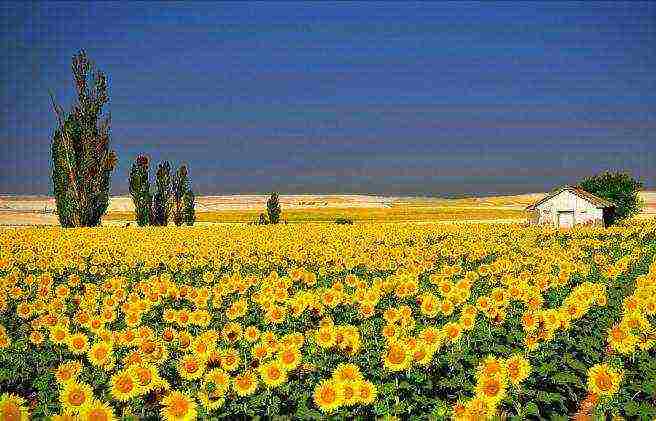
Cultivation of industrial crops
Industrial crops occupy a large cultivated area in all countries. Before growing one or another of them, they take into account not only climatic conditions, but also the proximity of processing plants, the market need for raw materials that are produced from a particular crop.
In Russia, industrial crops are not cultivated very actively, since the natural conditions make their cultivation labor-intensive, and large investments are required.In Ukraine, the geographical position of which is favorable for industrial crops, sugar beets, sunflowers and flax are actively cultivated.
All grain and industrial crops require the use of special harvesting machines and special tools. Usually this is also taken into account when preparing areas for certain crops.
Due to the growing interest of people in healthy, environmentally friendly lifestyles, the cultivation of many industrial crops brings additional profits to producers. An example is the lavender plantation in French Provence. People from all over the world come to admire the flowering of this amazingly beautiful and fragrant plant. Celebrations and festivals are arranged for them, which bring a hefty additional income.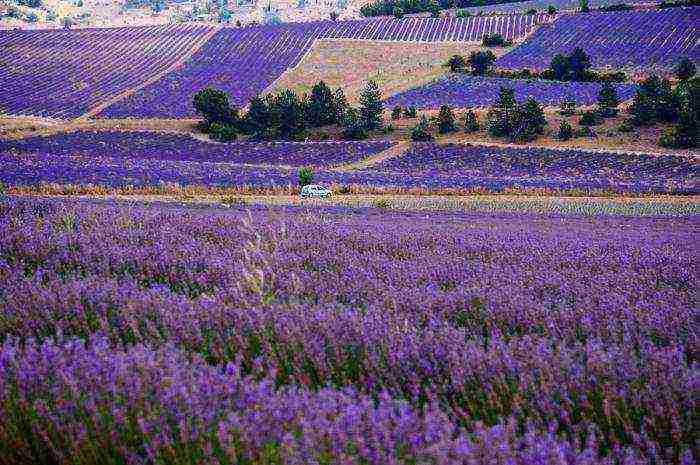
Main industrial crops in Russia
First of all, such industrial crops as sunflower are actively grown in Russia. Our country ranks second in the world for the production of sunflower seeds (Argentina is in the lead). This culture came to Russia under Peter I along with potatoes. At first, the sunflower was grown for decorative purposes, but then they were able to appreciate the enormous benefits of this plant.
Once upon a time, the British had a monopoly on sugar production, as all the sugarcane crops belonged to them. Already in the eighteenth century, other countries began to look for how to meet the needs of their market for sugar. As a result, in 1747, the German chemist Andreas Marggraf found sugar in sugar beets. Now sugar beet is included in the main crops (industrial) in many countries, and in Russia it occupies one percent of all cultivated land.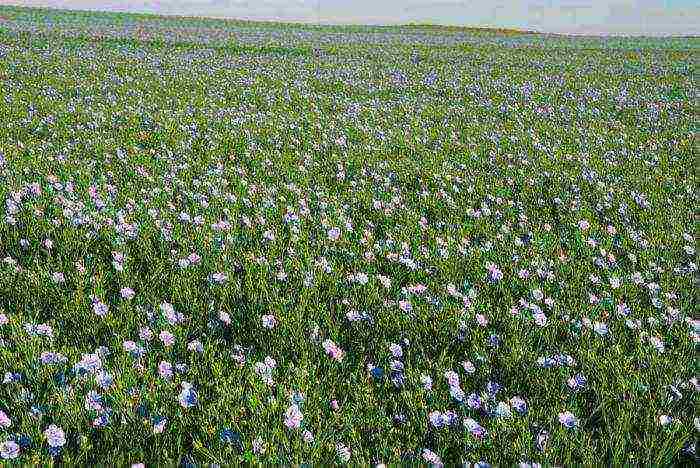
Russia has long been famous for the production of flax. Two-thirds of the world's flax fiber is cultivated in Belarus and Russia. Russia's cool and rainy summers are ideal conditions for growing flax. Although it is a fibrous crop, flaxseed oil has a high nutritional value and is used to make high quality paints. Linen fabrics are very durable, beautiful, they are used not only in light, but also in the aviation and automotive industries.
Industrial crops in the world
More than 20 million tons of cotton are produced in the world every year. It is the main technical culture in the world. One-fifth of the world's total is harvested by the United States and China, ten percent are cultivated by Pakistan and India, and a lot of cotton is grown in Turkey, Uzbekistan, Egypt and Syria. From a ton of cotton, 400 kg of fiber is made, from which three thousand meters of fabric are obtained.
India, China, Bangladesh and other Asian countries are famous for growing jute, sesal, supplying the whole world with burlap, ropes and rough fabrics. In Southeast Asia, hevea grows, from which rubber products are made.
Essential oil and dyeing plants are grown in many countries. For example, almost all of the world's saffron harvest belongs to Iran. It is not only a colorant, but also one of the most expensive condiments in the world. In order to get a kilogram of saffron, you need to collect 200 thousand crocuses.
It happens that industrial crops become a symbol of the country. For example, a rose in Bulgaria. In this country, in the Kazanlak Valley, there is a world-famous rose museum. The rose oil produced by the country has brought worldwide fame to Bulgaria.
Industrial crops such as tobacco and hops are also popular in the world. Cuban and Turkish tobacco is prized by smokers all over the world, and Germany is famous for its hop cultivation.
Genetically modified crops and their capabilities
Soybeans are currently the main technical crop in the world. American scientists believe that this will be the main source of protein for humanity. The United States produces three quarters of all soybeans in the world. Every tenth ton of all grain crops is soybeans. It is not only eaten, but also used for technical needs.Soybean oil can be used to make plastics, paints, biofuels.
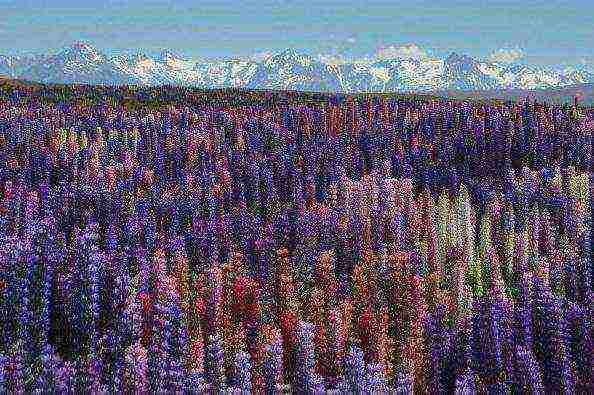
Scientists are currently working on the widespread use of such a technical culture as lupine. Its possibilities are even wider than that of soybeans. This industrial culture is surprisingly multifunctional: fibers give excellent quality tissue, oil with antioxidant properties is obtained from the plant, and coffee is made from the roots. The world leader in the production of promising crops is Australia.
Gasoline from industrial crops
The earth's oil reserves are running out, and scientists around the world are working to create the optimal biofuel. The best technical culture for this purpose is being sought.
Soybeans, rapeseed and cotton are the leaders in this field, but there are also lesser-known plants. Among them are the South American jatropha, Syrian cottonwood, copaiba, which grows in the tropics of the Amazon. In China, they found the plant of the Klabra syndrome. Its juice ignites like oil.
The cultivation of industrial crops has long gone beyond traditional agriculture and is turning into a modern high-tech industry with great prospects. Whoever understands this today will gain a lot tomorrow.
The content of the article:
- Types of crop production: main branches of production of plant products
- Types of crop production - the most demanded goods
- Cereals - the backbone of Russian crop production
- Industrial crops
The consumer market, food and light industries create demand for a variety of plant products. To satisfy the market demand, farmers grow various types of plant crops, from which, in the process of processing, they obtain specific products: from ready-made food (fresh fruits / vegetables) to industrial raw materials (technical oils, fibers for fabrics, etc.)
Types of crop production: main branches of production of plant products
In addition to the initially existing demand for various types of plant agricultural products, the variety of directions in the industry is also explained by the high level of its dependence on climatic conditions. When determining the list of crops that will be profitable to grow, the heads of agricultural enterprises are guided not only by the needs of the market, but also  weather conditions in the area where they have to work. Temperature regime, rainfall, solar radiation level, soil characteristics - all this is of fundamental importance when choosing a specialization of an agricultural producer.
weather conditions in the area where they have to work. Temperature regime, rainfall, solar radiation level, soil characteristics - all this is of fundamental importance when choosing a specialization of an agricultural producer.
According to the most common classification, there are seven types of crop production:
- growing grain crops;
- vegetable growing and melon growing;
- gardening and viticulture;
- floriculture;
- growing industrial crops;
- production of feed;
- forestry.
Types of crop production - the most demanded goods
Already the very terms denoting the branches of crop production make it clear what types of plant products they specialize in.
Thus, enterprises that grow grain crops supply wheat, rye, barley, oats, corn, millet, buckwheat, rice and other grains to the market.
Vegetable growing and melon growing provides the population with a variety of vegetables, of which the most important in Russia are:
- potato,

- onion,
- tomatoes,
- carrot,
- cucumbers,
- cabbage,
- Bell pepper,
- beetroot,
- eggplant,
- pumpkin and others.
Agrofirms engaged in horticulture and viticulture produce fruits and berries. In our country, they grow in large volumes:
- apples,
- pears,
- grape,
- plums,
- apricots,
- strawberries,
- raspberries,
- currants, etc.
Industrial crops are plants that are grown for the sake of raw materials for the food and light industries.This can include both some vegetables (for example, potatoes, from which starch is extracted) and grains, and plants that, in principle, are not eaten by either people or livestock (for example, cotton). In Russia, the main industrial crops are sunflower (sunflower oil is obtained from it), sugar beets (sugar), flax (fabrics and industrial oils are made from it), and potatoes.
Fodder farming is the foundation on which the entire livestock industry is built. Almost any cultivated plant can be used to some extent as feed for livestock. Very often, spoiled or substandard vegetables, fruits and grains are fed to animals. However, some plants are grown specifically for the production of feed from them:
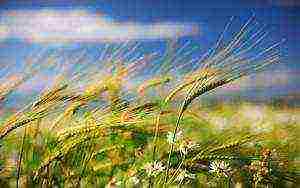 forage grasses (clover, alfalfa),
forage grasses (clover, alfalfa),- silage crops (fodder varieties of corn, cabbage),
- fodder root crops (some varieties of beets, carrots),
- cereals (feed oats, barley).
Forestry is of great importance for the economy, providing raw materials for many industries. In Russia, logging companies specialize primarily in pine, larch, spruce, oak and ash.
Floriculture stands apart. While other types of crop production have practical value (food, animal feed, raw materials for industry), flowers have an exclusively decorative function. In our country, this area is relatively poorly developed. On an industrial scale, mainly roses, tulips and chrysanthemums are grown.
Cereals - the backbone of Russian crop production
For most countries of the world, including Russia, the most important area of crop production is the cultivation of grain crops. This industry produces the most important foodstuffs that form the basis of the diet of modern people and also play a key role in the production of feed for farm animals.
Russian agrarians specialize in growing the following grain crops:
- wheat;
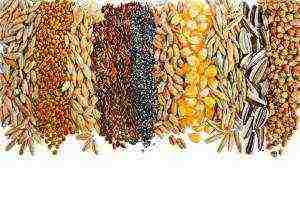
- rye;
- barley;
- oats;
- corn;
- millet;
- buckwheat;
- rice, etc.
The most important are wheat, rice, rye and barley. The grain of these plants, almost without exception, is present in one form or another in any meal of a modern Russian. It is also the main product used in the production of animal feed and a strategic raw material for some industries.
The queen of modern plant growing - wheat - has been known since the times of Ancient Mesopotamia and Ancient Egypt. It is believed that this culture comes from the steppes of the "fertile crescent" (modern Middle East), but today it is cultivated in almost all countries of the world, which became possible thanks to the development of many different varieties adapted to any climatic conditions. Nevertheless, the main wheat producers are the countries of the temperate zone of the Northern Hemisphere: USA, Canada, Russia, Kazakhstan, Ukraine, China. In the Southern Hemisphere, most wheat is grown in Argentina and Australia.
Rice is the second most important grain crop (after wheat) in the world. At the same time, in some regions of the planet (Southeast Asia, tropical countries of Africa and Latin America), rice is the first grain crop in terms of area of crops and volumes of harvest, which forms the basis of the diet of people. It is not only used in its usual form (like porridge), but also flour is made from it, starch is extracted, alcohol is boiled, rice processing waste is used for cattle feed.
According to the most common version, rice was first grown in the central and southern regions of modern China about three thousand years ago. Despite the work of breeders, this culture still remains very demanding on weather and climatic conditions: it needs a hot and humid climate.In this regard, about 90% of world rice production falls on its historical homeland - Southeast Asia. The world's largest rice producers are China, India, Indonesia, Thailand, Japan and Brazil. Rice is also grown in relatively small quantities in Russia - in the southern regions, where the climate is most suitable for it.
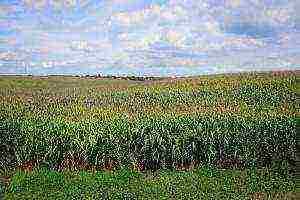 Corn is the main fodder resource in the United States and Western Europe, and in Asia, Africa and Latin America, it is used primarily as a food crop. It is also of great importance as a technical culture. In modern Russia, corn is grown in relatively small quantities.
Corn is the main fodder resource in the United States and Western Europe, and in Asia, Africa and Latin America, it is used primarily as a food crop. It is also of great importance as a technical culture. In modern Russia, corn is grown in relatively small quantities.
This plant comes from the territory of modern Mexico, from where it was brought to Europe several centuries ago. The world's major corn producers are countries with warm temperate or subtropical climates. Most of all it is grown in the USA, China, Brazil, Ukraine, Mexico, Argentina and India.
Industrial crops
Among the main types of crop production in Russia, one should also talk separately about industrial crops. This group covers a fairly wide range of plants of very different species and families. Some of them can be cultivated both as conventional food / feed and as technical ones. Their main feature is that they are grown for the sake of technical raw materials that can be obtained from them after special processing. There are several types of such plants:
- spinning;
- oilseeds;
- sugar bearers;
- dyeing;
- rubber plants.
Sugar and oilseed industrial crops are most actively grown in Russia. Sugar plants are mainly represented by sugar beets. It accounts for 60% of the world's sugar production. The remaining 40% comes from sugar cane, which practically no one cultivates in Russia. In addition to us, beets are also grown in large volumes in the EU countries, Ukraine, Belarus, Turkey, Iran, China, Japan, the USA and Canada.
As for oilseeds, sunflower is in the first place. Russian farmers cultivate rapeseed, flax and soybeans to a much lesser extent. In the countries of Southeast Asia, the oil palm is of great importance, in Africa - the peanut. The largest producers of vegetable oils are: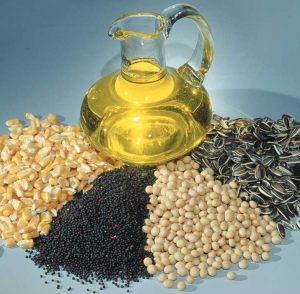
- Indonesia (palm oil),
- Malaysia (palm oil),
- Argentina (sunflower oil),
- Ukraine (sunflower oil),
- USA (soybean oil),
- India (peanut and sunflower oil),
- China (cottonseed and rapeseed oil).
From spinning crops, fiber is obtained, which is used as a raw material for the textile industry. Globally, the most widespread are cotton, fiber flax, jute and hemp. Russian farmers grow mainly flax and cotton in much smaller quantities. In the production of cotton, the leading countries are Asia, America and Africa. About 75% of flax is produced by Russia and Belarus, the main jute producer is Bangladesh.
Approximately about 70 percent of the food consumed worldwide is plant-based. That is why crop production is one of the key industries that serves as the fundamental basis of agricultural production.
Thanks to the climatic conditions and the presence of a large amount of fertile land in Russia, it is possible to grow a huge number of agricultural crops on an industrial scale. Crop production in Russia is mainly concentrated in the territory located in the temperate continental climatic zone. If we talk about the regions, these are the Ciscaucasia, the Urals, the Central Volga region and Western Siberia. Both industrial and food crops are grown on the territory of these regions.
The importance of crop production for the country's economy
Crop production is one of the main economic engines of agriculture. In our country, vast territories are occupied by arable fertile lands located in favorable climatic conditions, so Russia is able to grow huge yields of wheat. At the same time, the agricultural complex not only fully meets the needs of our country, Russia is also one of the leaders in grain export to other countries.
What crops are cultivated in Russia?
Many technological and cultivated plants are grown in our country, but spring and winter wheat varieties, which are grown in many regions of Russia, have the highest yield. Barley is also very successfully cultivated, which ranks second after wheat in terms of production, and its share is 25% of all production. The great popularity of barley is due to the fact that it tolerates frost well, so it can be grown in many regions of the country, and it also ripens very quickly. The main uses for barley are brewing and animal husbandry.
Also, the climatic conditions of our country make it possible to collect large harvests of rice, rye, buckwheat, corn, sunflower, potatoes and many other crops. Despite the fact that their production volumes are much less than that of wheat and barley, nevertheless, farmers collect good harvests of these crops. Recently, great efforts have been made to increase the volume of rice cultivation.
Potatoes and sugar beets are grown on a large amount of arable land, but their production is still far from industrial scale. Sugar beet also plays an important role in Russian crop production, since sugar is made from it, and the tops are used as feed for pigs. On an industrial scale, sunflower is cultivated in Russia, the seeds of which are used for the production of vegetable oil.
Melon and vegetable growing
Crop production is not only the cultivation of grain crops. Vegetable growing and melon growing are also actively developing in Russia. Basically, these areas of crop production are concentrated in the southern regions of the country, where the climate is milder and warmer, and the summer is not too dry. Crops such as cucumbers, tomatoes, onions, cabbage, carrots, watermelons, eggplants, squash melons and many others are grown in large volumes. Some crops are used exclusively for domestic needs, while some are exported to other countries.
The importance of crop production for agriculture
Crop production is one of the leading branches of agriculture, largely stimulating the economic development of the country. It is aimed at growing cultivated plants and supplying them to the domestic market in order to provide the country's food base. It is important to understand here that the level of development of this industry has a direct impact on the level of development of animal husbandry. This is due to the fact that farmers grow many types of fodder crops that are used to feed livestock. Therefore, colossal amounts of money are annually allocated from the state budget, which are spent on the development of crop production.
What factors influence the development of crop production?
The development of plant growing industries is vital for the economic development of the country, as well as ensuring its food security. Therefore, neither the state nor the agrarians spare financial resources and time to achieve the desired result.
But for development to be as effective as possible, the following factors must be taken into account:
- Rehabilitation of depleted and depleted areas of land. This is very important, since the yield of any crop depends on the availability of nutrients and macronutrients in the soil.
- Development of innovative technologies.An equally important aspect, since product quality and yield require constant improvement of plant cultivation methods, as well as the use of reliable technology. Mechanized work in crop production also plays an important role, which makes it possible to significantly increase the volume of production without significant financial and labor costs. This requires support from the state.
- Healthy competitive environment. The lack of competition in the market negatively affects the development of crop production, which, in turn, slows down the country's economic growth.
- Technological progress and scientific developments. The more innovations are introduced into this industry, the lower the cost of crop production will be. Moreover, the more profitable the industry is, the greater the financial contributions to the state treasury will be.
From all of the above, it follows that enterprises engaged in crop production will be concentrated in those regions of the country in which scientific and technological progress, favorable social and economic factors, fertile lands and suitable climatic conditions are well developed. The last two factors are key, since the yield of industrial and food crops depends on them.
Main industries
As mentioned at the beginning of this article, crop production provides about 70 percent of the world's food.
There are the following crop industries focused on the cultivation of certain crops:
- cereals (wheat, rye, barley and others);
- potatoes and tuber crops;
- industrial crops;
- vegetables and melons;
- grapes and fruit;
- forage crops.
Each branch of crop production has certain characteristics, so let's take a closer look at each of them.
Cultivation of cereals
This industry is the most important not only in Russia, but all over the world, since grain crops are not only consumed more than others for food, but also act as food for pets. Which is very, very much in demand in animal husbandry. In addition, grain is used in many industrial sectors. About half of the world's fields are planted with cereals.
The most common crops in this industry are wheat, rice and corn. Thanks to the efforts of breeders around the world who have developed new varieties of cereals, as well as the continuous development of new technologies and innovative cultivation methods, the cultivation of cereals today has become possible in almost every part of our planet.
Cultivation of potatoes and tuber crops
Russia occupies a leading place in the world in terms of potato production. Also in our country, sugar beets and cane are grown in large quantities, from which sugar is made. Despite the fact that beets are grown on an industrial scale, nevertheless, in terms of production, Russia is significantly inferior to many countries.
Industrial crops
The technology of plant growing in the field of growing industrial crops in Russia is very well developed, therefore, in our country, fibrous crops are cultivated in large volumes, from which fabric, rubber, as well as crops that act as raw materials for the production of various oils are produced. The most common fiber crops grown in our country are cotton, flax and jute. Rubber is also of great value because it is used by industry for the production of many natural and synthetic materials that are used in various spheres of human life.
Vegetable growing and melon growing
Crop production, the species of which are considered in this article, is also aimed at growing vegetables and melons.But the scope is much smaller than that of those discussed above, since the optimal climate for their cultivation is inherent only in the southern regions of the country, nevertheless, much attention is paid to their production. The most common vegetable crops are carrots, cabbage, onions, zucchini, tomatoes, eggplants and some others. As for melon growing, in Russia watermelons and melons show good yields.
Growing fruit crops and grapes
This branch is directed to the cultivation of various grape varieties and a variety of horticultural crops, from which wine and juices are subsequently made. Viticulture and horticulture is best developed in the southern and central regions of Russia.
Fodder crops
This industry, like the cultivation of grain crops, acts as the basis of crop production, since the level of its development directly affects the level of development of animal husbandry. Residues from some forage crops are excellent feed for pigs. In addition, some crops are specially cultivated for fattening livestock. Therefore, much attention is paid to increasing the production of forage crops, increasing the level of their quality and yield, as well as reducing costs.
Secondary areas of crop production
Above, the main branches of crop production were considered, which have a significant impact on the economic development of our country. But there are still secondary directions that are also developing, but not on such a scale. Such industries include floriculture and seed growing.
Floriculture is aimed at breeding and growing new varieties of indoor and garden plants. This direction in Russia is poorly developed due to insufficient funding, so most of the products of this group are purchased abroad.
Seed production is a fundamental industry that underlies all crop production. It is aimed at growing seeds of agricultural crops, which, in turn, are planting material. Not only the yield depends on the quality of the seeds, but also the quality of the products.
Conclusion
Russian plant growing is primarily aimed at growing cultivated plants that are used to form a food base. But also crops are cultivated that are involved in the processing of crop products. These include many types of crops that are raw materials for light industry.
Today, crop production in our country is experiencing many problems associated with low infrastructure development, lack of innovative and modern cultivation methods, as well as poor technical equipment. For its development, the state is making great efforts, allocating money from the budget and carrying out various reforms. Despite the problems, our country is one of the main suppliers of plant products to the world market.
It should be noted that in recent years, the level of development of crop production has entered a completely new stage. After the introduction of economic sanctions against Russia by Western countries, the state significantly increased subsidies to farms, thanks to which new technologies began to be introduced that made it possible to reduce the cost of production and increase the profitability of agricultural business. In the future, the government of the country is also going to improve the development of crop production in the country, thanks to which the economy can significantly grow.
